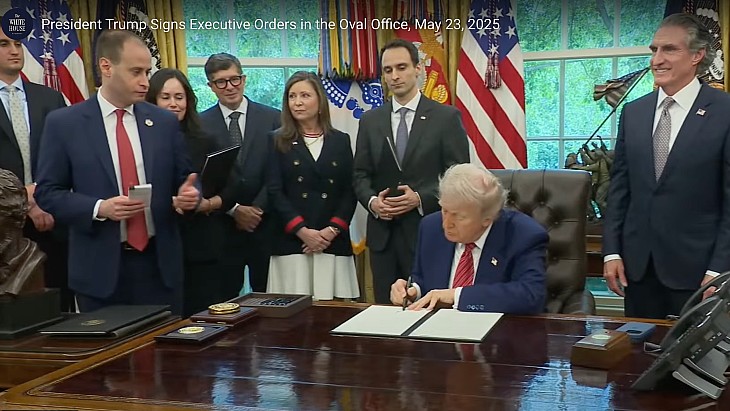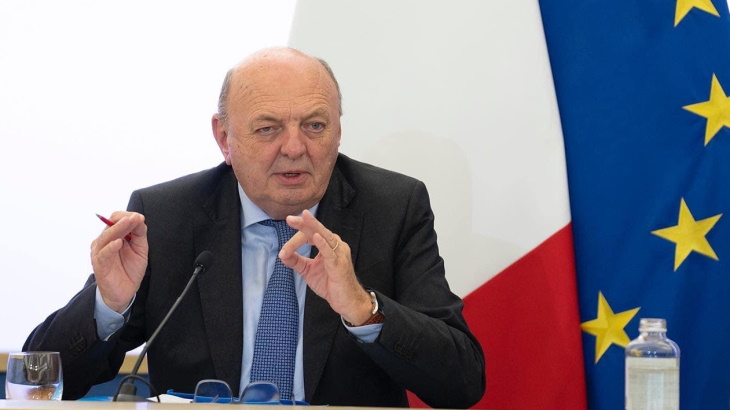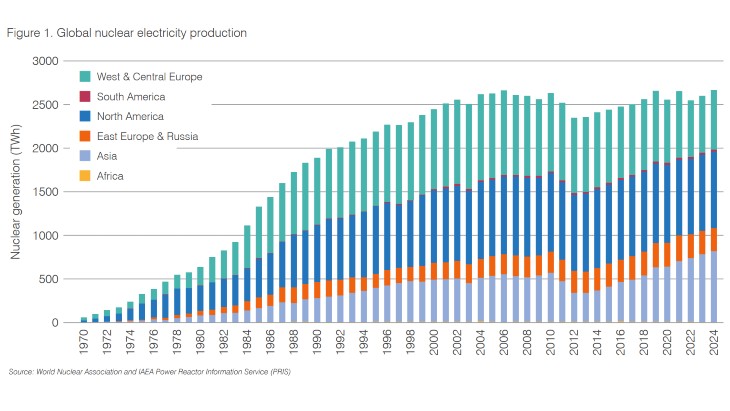The Department for Business, Energy and Industrial Strategy (BEIS) announced in June 2018 that the government would review the viability of a Regulated Asset Base (RAB) model for new nuclear projects and committed in January this year to publishing an assessment of this model by the summer. The consultation states that, as the cost of renewable technologies continues to fall, they are likely to provide the majority of the country's low-carbon generating capacity in 2050. It adds however there will still be a crucial role for low-carbon 'firm' - always available - power in 2050.
Launching the consultation yesterday, BEIS said: "Our assessment has concluded that, by providing regulated returns to investors, a RAB model has the potential to reduce the cost of raising private finance for new nuclear projects, thereby reducing consumer bills and maximising value for money for consumers and taxpayers."
The consultation is open until 14 October.
Future projects
The RAB model would not apply to Hinkley Point C (HPC), which is currently under construction by EDF Energy in Somerset, England, but would apply to future projects.
As many as five more new-build projects had been planned - by EDF Energy together with China General Nuclear (CGN); NuGeneration (NuGen); and Horizon Nuclear Power.
French-owned EDF Energy is building two European Pressurised Reactors (EPRs) at Hinkley with CGN owning a 33.5% stake in the project. They also plan to build new plants at Sizewell in Suffolk and Bradwell in Essex, the latter using Chinese reactor technology. This design, the UK HPR1000, is undergoing the Generic Design Assessment (GDA) process with the Office for Nuclear Regulation and the Environment Agency.
But in November last year, Toshiba Corp announced it was scrapping its nuclear new-build project in the UK and would wind up its subsidiary managing the project, NuGen. The aim had been to build a nuclear power plant of up to 3.8 GWe gross capacity using AP1000 nuclear reactor technology provided by Westinghouse. The reactor design completed the GDA process in March 2017, the same month that Toshiba-owned Westinghouse filed for Chapter 11 protection with US courts.
Then, early this year, Horizon's new-build projects were suspended even though the UK subsidiary of Japan’s Hitachi had made substantial progress with its plans to provide at least 5.4 GWe of new capacity across two sites - Wylfa Newydd, in north Wales, and Oldbury-on-Severn, in southwest England - by deploying Hitachi-GE UK advanced boiling water reactors. The UK ABWR design successfully completed the GDA process in December 2017.
Informing Parliament of Hitachi's decision, Greg Clark, secretary of state for BEIS, said the company had "made clear that while it is suspending project development at this stage, it wishes to continue discussions with the government on bringing forward new nuclear projects at both Wylfa and Oldbury and it intends to work closely with the company in the weeks and months ahead”. He added that his department was considering a new funding model for nuclear.
BEIS has said that the RAB model could go some way to addressing some of the difficulties experienced in funding nuclear new-build projects, where there is a long lag on return on investment throughout the construction period and before the units are operational. A RAB model would allow investors to start making a pre-determined return as they invested, but any new policy would require primary legislation and the whole process of developing and then enacting a new policy would likely take a minimum of 18 months.
New model
HPC is being financed by EDF and CGN, with a contract-for-difference (CfD) already agreed with the UK government to provide long-term price stability for the generator once the plant begins generating (but leaving construction and operating risk with the investors). The consultation published yesterday notes that the CfD model had been "appropriate in this instance" as HPC was the first new nuclear project to begin construction in the UK for a generation.
"At the point the decision was taken to enter into the CfD contract, the EPR technology was not operational anywhere in the world, and similar projects in France and Finland had suffered from significant delays and cost overruns," the introduction to the consultation document reads. "It was therefore right that all construction and operational risk should sit with the project investor."
"The context will, however, be different for future new nuclear projects. HPC is now under construction, providing employment opportunities and helping to rebuild the supply chain for new nuclear projects across the UK, providing valuable knowledge and skills. Furthermore, on 24 June this year HPC reached a significant construction milestone with the completion on schedule of the concrete base for the reactor buildings, helping to build confidence in the delivery of further new nuclear projects in the UK. The EPR technology has now started commercial operations in China, and other technologies that have been proposed for deployment in the UK are either already operational elsewhere or are expected to be operational before they would be deployed in the UK."
Despite the progress at HPC, the challenges facing the global nuclear industry have meant that replicating a CfD model for further new nuclear projects has proved "very challenging", it said.
"Few project developers have a balance sheet that can accommodate the GBP15-20 billion cost of delivering a new nuclear project, and financial investors have been unwilling to invest during the construction phase given the long construction period and risk of cost increases and delays. We are therefore looking to work with the sector to develop an alternative funding model for new nuclear projects that can attract private finance at a cost that represents value for money to consumers and are considering its wider applicability to other firm low-carbon technologies."
Welcome news
In response to the consultation yesterday, EDF Energy said: “Alongside a big expansion of renewables, reliable nuclear power is needed to help us switch from polluting fossil fuels and reach net-zero emissions. Nuclear’s proven technology reduces the difficulties and cost of trying to decarbonise the electricity supply we all use and depend on. Lower costs for financing nuclear will benefit consumers through their bills and [the] consultation shows a way this can happen at Sizewell C in Suffolk."
As a "near replica" of HPC, the company said that Sizewell C will be cheaper to construct and finance. "It will benefit from the experience of Hinkley Point C's engineers, contractors and suppliers and lessons from other nuclear projects, including operational EPR plants. It can also repeat the huge boost for industry, jobs and skills already happening due to Hinkley Point C's construction, which is on schedule," it said.
Horizon said today: "Nuclear power will be crucial for the UK as it looks to meet its net-zero commitments and we warmly welcome this announcement, which could help bring forward vital new nuclear build and the clean, secure energy it will deliver. As we said when we announced the suspension of our projects, a new funding and financing model is one of the essential steps if we are to potentially restart our development activities. We will now look in detail at what the government has set out and continue our engagement with them on this issue."
Tom Greatrex, chief executive of the UK Nuclear Industry Association, said the RAB model “promises to make a substantial contribution" to reducing the cost of building the new nuclear capacity the country needs if it is to meet its climate change targets.
"This approach is already well established with investors in large infrastructure projects, and will reduce the cost to consumers as we replace our ageing fleet. Doing so is fundamental to meeting net zero, and we need to get on with it now," Greatrex said.
Ministerial changes
Boris Johnson, the former foreign secretary and before that the mayor of London, today won the Conservative Party leadership contest and will become the UK's new prime minister tomorrow. Johnson has said he will deliver Brexit - the country's exit from the European Union and consequently the Euratom Treaty - by 31 October. Johnson replaces Theresa May, whose Withdrawal Agreement with Brussels was rejected three times by Parliament, leading to her resignation as prime minister and leader of the Conservative Party on 7 June.
Johnson has in the past supported nuclear power projects but has also criticised their high costs, according to the Financial Times.
Several ministers resigned in expectation of Johnson's victory in the ballot by Conservative Party members - he beat the other candidate, Foreign Secretary Jeremy Hunt, by 92,153 votes to 46,656. Clark is also expected to leave his post this week, joining Chancellor Philip Hammond and about 30 other Tory MPs opposed to a no-deal Brexit on the backbenches in the House of Commons.

.jpg)











